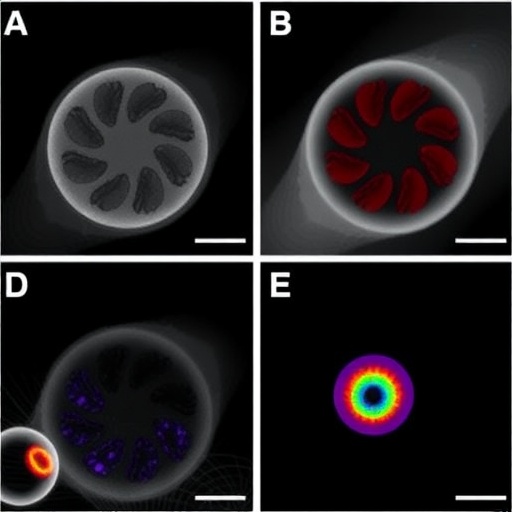In recent years, the landscape of healthcare management has evolved significantly, particularly in the domain of public hospitals. The emergence of outsourcing non-clinical services has become a focal point for healthcare administrators seeking to improve efficiency and patient outcomes. A comprehensive study titled “Designing a management model for outsourcing non-clinical services in public hospitals in Iran” highlights this shift, offering insights that could reshape the operational frameworks of hospitals not just in Iran but globally.
Outsourcing, as a strategic initiative, aims to transfer specific business processes or services to third-party vendors. In the context of public hospitals, this typically encompasses various non-clinical services such as janitorial work, food services, maintenance, and supply chain management. The rationale driving public institutions to adopt outsourcing strategies stems from the necessity to reduce operational costs while reallocating resources towards primary healthcare objectives.
The findings presented by Merati and colleagues illuminate the intricate balance between maintaining quality care and leveraging external expertise. By outsourcing, hospitals can focus on their core competencies, essentially channeling their energies towards patient care and clinical excellence. The proposed management model provides a structured approach, integrating various elements of operational efficiency and quality assurance, which are paramount in healthcare.
One of the model’s significant components is the establishment of strategic partnerships with specialized vendors. Such collaborations are designed to create symbiotic relationships where both parties benefit. For public hospitals, this means accessing advanced technologies and expertise that might not be feasible to develop in-house. As healthcare continues to advance technologically, leveraging the specialized knowledge of external partners is becoming increasingly crucial.
Additionally, the research delves into the financial implications of outsourcing services. The economic pressures faced by public hospitals necessitate innovative financial strategies. Outsourcing can lead to substantial cost savings, allowing healthcare facilities to allocate funds toward critical areas such as patient care, new technology, or facility upgrades. However, the success of such financial strategies relies heavily on the proper execution of the outsourcing model, which must include careful vendor selection and performance evaluation.
The proposed management model underscores the importance of a clear framework for performance measurement. It’s vital that hospitals assess the efficacy of outsourced services through established metrics that align with organizational goals. These metrics might include patient satisfaction, cost savings, and service reliability. Developing a robust evaluation mechanism ensures that the hospital can hold vendors accountable and fosters an environment of continuous improvement.
An essential aspect that the study addresses is the potential challenges associated with outsourcing. While the benefits are substantial, there are inherent risks, including loss of control over service quality, potential for service disruptions, and cultural misalignment between hospital staff and external vendors. These challenges highlight the necessity for comprehensive planning and robust communication strategies throughout the outsourcing process.
Moreover, employee engagement stands out as a crucial element in the outsourcing conversation. Staff implications should not be overlooked; healthcare workers might perceive outsourcing as a threat to job security. Addressing these concerns openly and fostering an inclusive culture can mitigate resistance. Engaging employees in the transition process and emphasizing the benefits of outsourcing can lead to smoother implementations and improved morale.
The transition to an outsourcing model is not merely a transactional change; it encapsulates a cultural shift within the organization. Leaders must advocate for a mindset that values collaboration and innovation. This can empower both hospital administration and vendor partners to work cohesively, aligning their goals with the hospital’s mission to provide high-quality care.
Furthermore, the study accentuates the role of technology in facilitating successful outsourcing initiatives. With the increasing digitization of healthcare, effective IT infrastructure becomes indispensable. Hospitals require sophisticated management systems to track outsourced services and ensure seamless integration between internal operations and external vendor offerings. This technological backbone supports real-time data sharing, ultimately enhancing decision-making processes.
In summary, Merati and colleagues shed light on a crucial aspect of healthcare management that is just emerging in public hospitals, particularly in Iran. Their research not only provides a strategic framework for outsourcing but also highlights the broader implications of such a shift. As hospitals navigate the complexities of modern healthcare demands, the effective management of non-clinical services through outsourcing may represent a pivotal strategy in optimizing resource utilization and enhancing patient care.
Ultimately, as the healthcare sector continues to grapple with financial constraints and operational challenges, innovative solutions will be vital. The management model outlined in this research appears to offer a practical approach for public hospitals aiming to maximize efficiency. By thoughtfully integrating outsourcing within their strategic frameworks, health institutions can pave the way for sustainable growth while maintaining a steadfast commitment to quality healthcare.
As we delve into the findings outlined in this article, it becomes clear that the future of public hospital management is increasingly interconnected with strategic outsourcing initiatives. This evolution can facilitate enhanced service delivery and operational excellence, positioning healthcare facilities to better serve their communities. Continuous research and development in this area will be critical as healthcare leaders strive to meet the ever-evolving landscape of patient needs and expectations.
Subject of Research: Outsourcing non-clinical services in public hospitals
Article Title: Designing a management model for outsourcing non-clinical services in public hospitals in Iran.
Article References:
Merati, S., Nasiripour, A., Riahi, L. et al. Designing a management model for outsourcing non-clinical services in public hospitals in Iran.
BMC Health Serv Res (2025). https://doi.org/10.1186/s12913-025-13521-y
Image Credits: AI Generated
DOI:
Keywords: Outsourcing, non-clinical services, public hospitals, management model, healthcare efficiency, strategic partnerships, cost savings, quality assurance, employee engagement, technology integration.
Tags: cost reduction strategies in public healthcareenhancing core competencies in hospitalshealthcare management in Iranimproving patient outcomes through outsourcingIranian public hospital efficiencymanagement models for healthcare outsourcingoperational frameworks for hospitalsoutsourcing non-clinical services in hospitalsquality assurance in outsourced servicesresource allocation in healthcarestrategic outsourcing in healthcarethird-party vendor partnerships in hospitals





